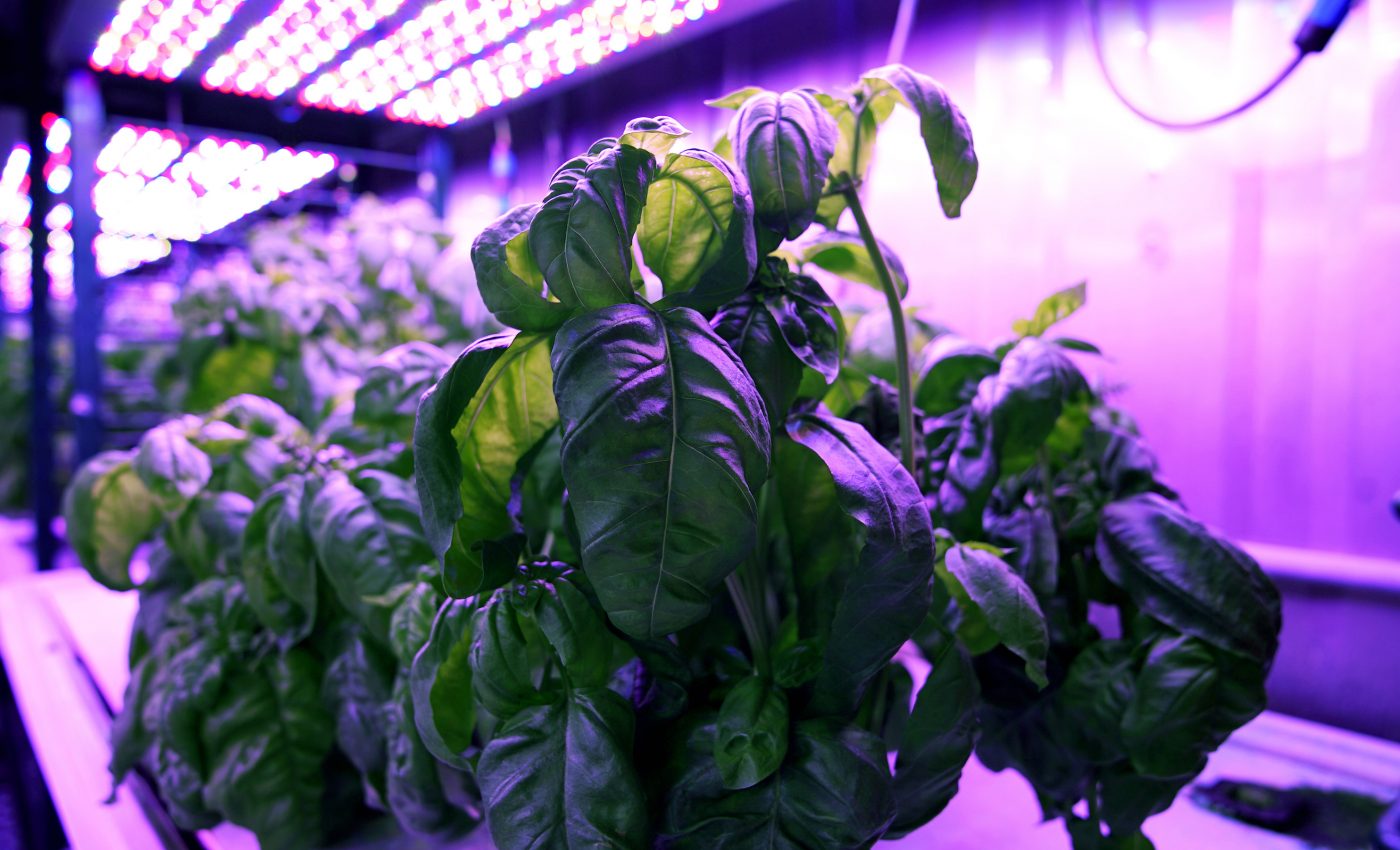
‘Cyber agriculture’ could produce tastier crops
Researchers working on the Open Agriculture Initiative at the Massachusetts Institute of Technology Media Lab have grown basil plants using computer algorithms that determine the perfect growing conditions to maximize the basil’s taste. Called “cyber agriculture,” this method of combining computer technology with botany and chemistry could not only improve crop flavor, but also enhance disease-fighting compounds in herbs and aid growers in adapting their crops to changing climate conditions.
“Our goal is to design open-source technology at the intersection of data acquisition, sensing, and machine learning, and apply it to agricultural research in a way that hasn’t been done before,” said Caleb Harper, a principal research scientist in MIT’s Media Lab and director of the OpenAg group. “We’re really interested in building networked tools that can take a plant’s experience, its phenotype, the set of stresses it encounters, and its genetics, and digitize that to allow us to understand the plant-environment interaction.”
Harper and his colleagues are experimenting with cyber agriculture in climate-controlled shipping containers. They’re not the only ones to be playing around with the idea of cyber agriculture — sometimes called environmental agriculture, vertical farming, or urban farming — however, companies who are partaking in the process rarely share their information and findings. The OpenAg group hopes to knock down this barrier and make information, software, and data pertaining to their cyber agriculture findings widely available for anyone who wishes to access it.
“There is a big problem right now in the agricultural space in terms of lack of publicly available data, lack of standards in data collection, and lack of data sharing,” Harper said. “So while machine learning and artificial intelligence and advanced algorithm design have moved so fast, the collection of well-tagged, meaningful agricultural data is way behind. Our tools being open-source, hopefully they will get spread faster and create the ability to do networked science together.” They’re starting with publishing their findings April 3rd in PLOS ONE.
In their study, the team set out to prove the effectiveness of cyber agriculture. In the climate-controlled shipping containers, the team set up hydroponic vessels which they called “food computers.” While growing in these vessels, basil plants were exposed to specific durations of light and ultraviolet light, and once full grown, the plants were evaluated for their taste via gas chromatography and mass spectrometry, chemistry techniques that allowed the researchers to measure the concentration of volatile compounds in the basil plants’ leaves.
The information collected from this experiment was then fed to a machine-learning algorithm program, which generated plans for growing conditions that would maximize flavor, such as a 24-hour daylight exposure plan.
Researchers are now playing with other conditions like humidity, temperature, and colored light, along with adding nutrients or hormones to the growing process. Further, adjusting conditions to enhance compounds within specific plants could be translated into the medical field in the future as well as set up new regimes for crops that are feeling the negative effects of climate change.
“You can see this paper as the opening shot for many different things that can be applied, and it’s an exhibition of the power of the tools that we’ve built so far,” said coauthor John de la Parra, the research lead for the OpenAg group. “This was the archetype for what we can now do on a bigger scale.”
—
By Olivia Harvey, Earth.com Staff Writer
Paid for by Earth.com
Image Credit: Melanie Gonick













